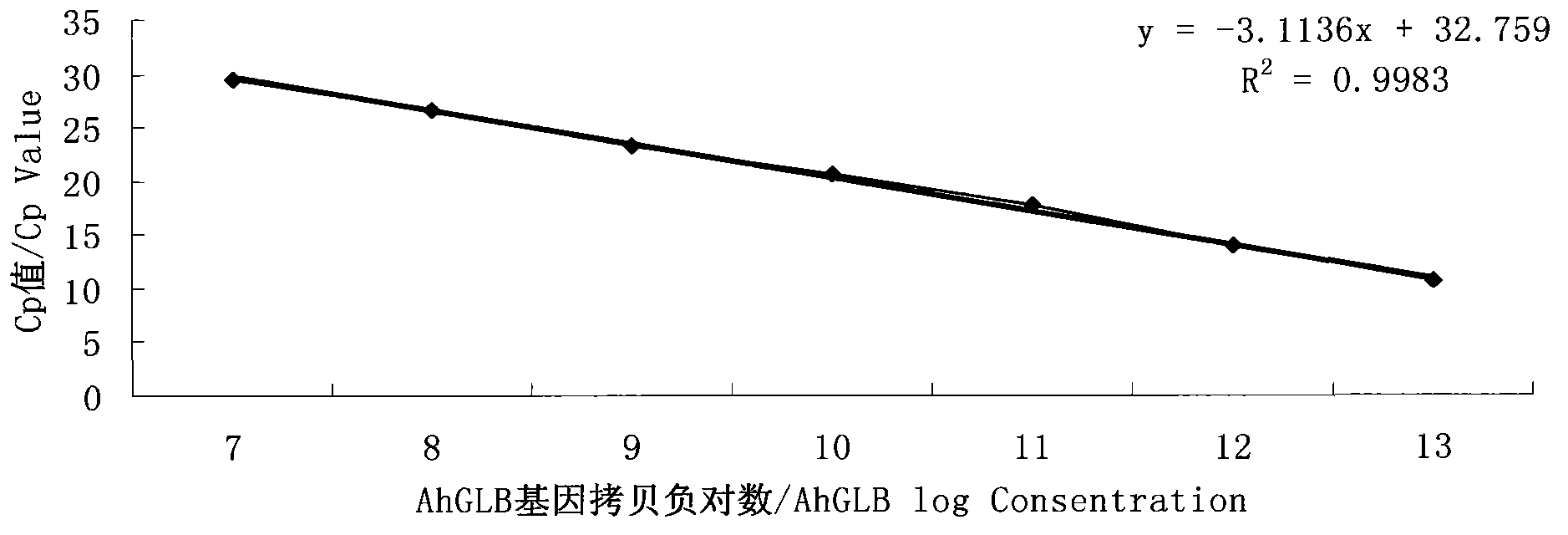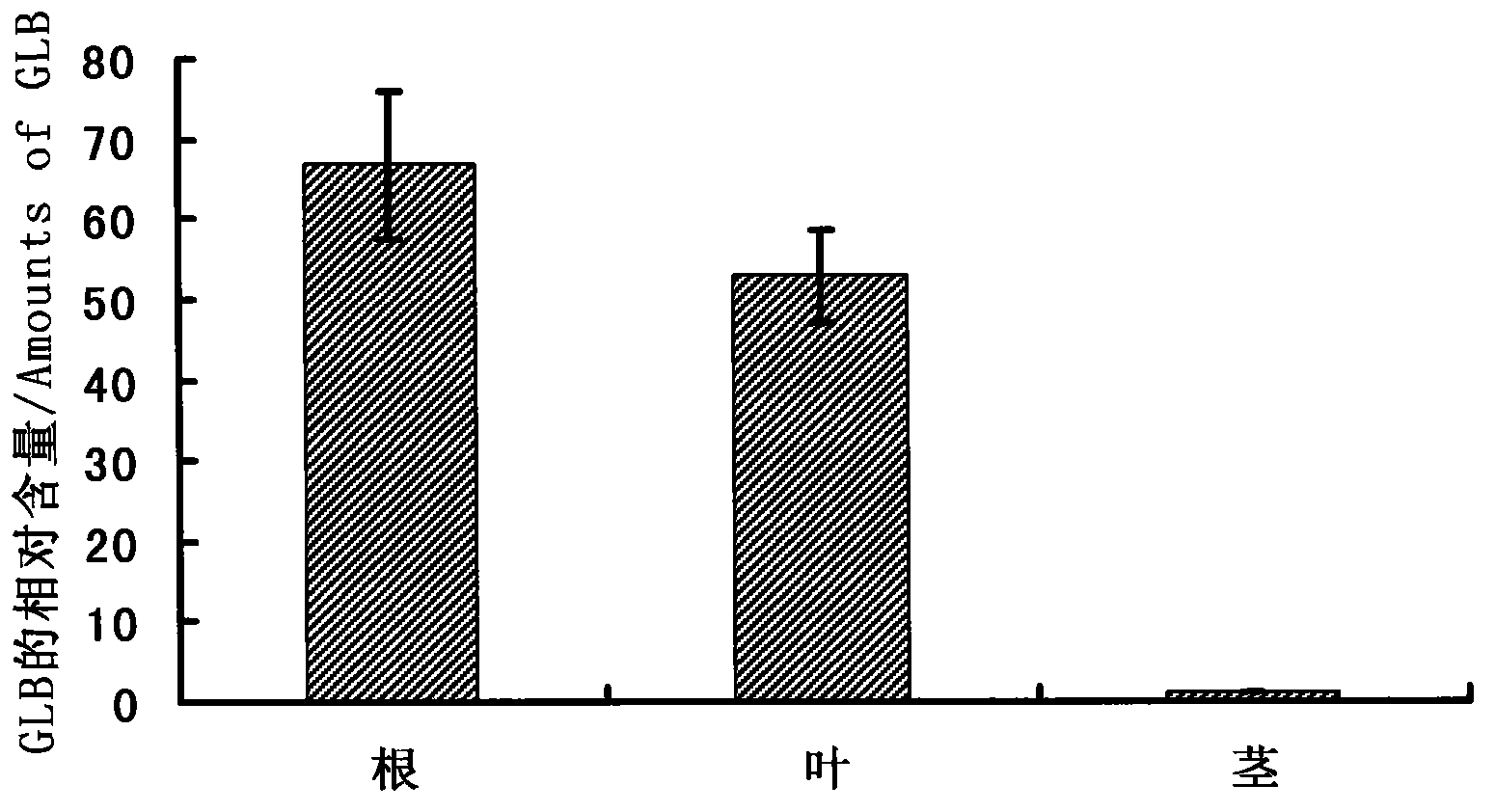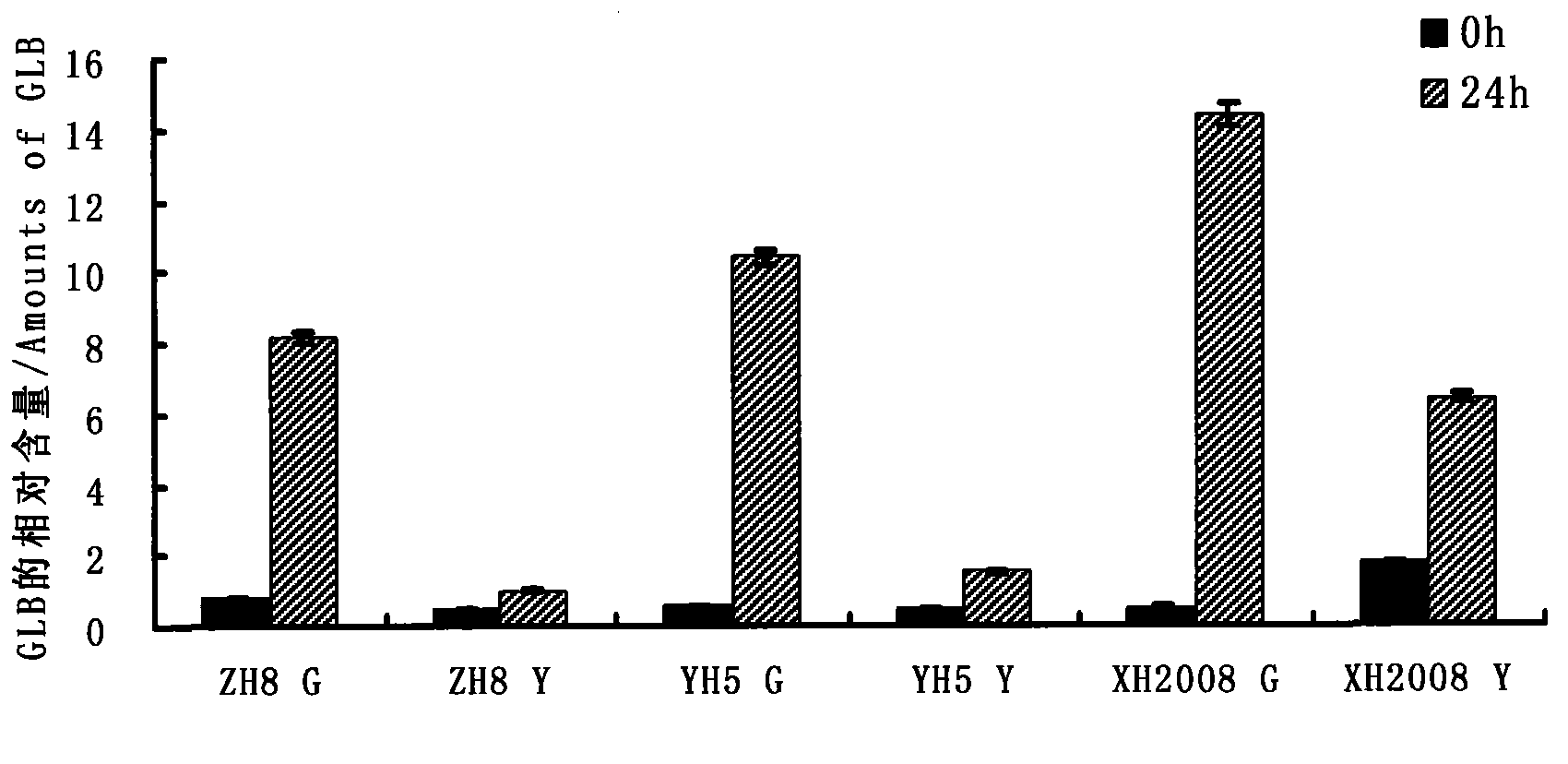Nonsymbiotic hemoglobin gene AhGLB for waterlogging resistance of peanut and its application
A technology for hemoglobin and peanuts, applied in the field of agricultural biology, can solve problems that rarely involve in-depth research on internal mechanisms
- Summary
- Abstract
- Description
- Claims
- Application Information
AI Technical Summary
Problems solved by technology
Method used
Image
Examples
Embodiment 1
[0024] Example 1: Acquisition of peanut waterlogging tolerance gene AhGLB
[0025] 1. Extraction of total RNA from peanut tissue
[0026] Experimental preparation: All utensils used need special treatment. High-temperature-resistant instruments and utensils were baked at 150°C for 3 hours, and other utensils were soaked in 0.1% DEPC for 12 hours, and then autoclaved to remove DEPC. The solution reagents are treated with 0.1% DEPC (sterilized after 12 hours at 37°C), and the reagents that are not resistant to high temperature are directly treated with DEPC-H 2 O preparation. Total RNA was extracted according to the operation requirements of TIANGEN's Trizol Reagent, the specific steps are as follows:
[0027] 1) Take the young peanut leaves and grind them into powder in liquid nitrogen, then add 1 ml of Trizol solution for every 50 mg of tissue to grind, and note that the total volume of the sample should not exceed 10% of the volume of the Trizol used.
[0028] 2) Centrifu...
Embodiment 2
[0090] Embodiment 2: Utilize fluorescent quantitative PCR technology to detect the expression level of peanut waterlogging tolerance gene AhGLB, detect according to the following steps:
[0091] 2.1 Total RNA extraction and cDNA synthesis
[0092] Extract the total RNA of peanut leaves, refer to the test method in Example 1, reverse transcription process (Table 10):
[0093] Table 10
[0094]
[0095]
[0096] The system was placed at 37°C for 15 minutes, and the cDNA product was stored at -20°C.
[0097] 2.2 Drawing of standard curve
[0098] Design a pair of PCR primers according to the cloned gene fragment: AhGLBRT-S and AhGLB-RT-AS, extract the total RNA of peanut seed coat, reverse transcribe it into cDNA, use it as a template, carry out PCR amplification, recover the amplified product, and The PCR product was ligated with pMD-18, and then transformed into Escherichia coli DH5α. After identification by colony PCR, a large number of positive clones were amplified,...
Embodiment 3
[0110] Example 3: Detecting the Specific Expression of the Peanut Waterlogging Resistance Gene AhGLB Using Fluorescent Quantitative PCR Technology
[0111] In order to detect the specific differential expression of peanut waterlogging tolerance gene AhGLB, three varieties of Xianghua 2008, Yuhua 15 and Zhonghua 8 were selected and carried out in a constant temperature culture room. Take peanut seeds that are plump, undamaged, and relatively uniform in size, soak overnight, and then place them in a petri dish that has been lined with filter paper in advance, and put a small amount of tap water in the petri dish, and cultivate them in an incubator under the condition of light for 13 hours , the light intensity is 230-260μmol.m -2 .s -1 , the temperature is 24-26°C, and the relative humidity is 50-60%, and wait for it to germinate. After the peanuts germinated, they were cultured in hydroponic culture, and when they grew to the eighth true leaf of the seedlings, the peanut seed...
PUM
 Login to View More
Login to View More Abstract
Description
Claims
Application Information
 Login to View More
Login to View More - R&D
- Intellectual Property
- Life Sciences
- Materials
- Tech Scout
- Unparalleled Data Quality
- Higher Quality Content
- 60% Fewer Hallucinations
Browse by: Latest US Patents, China's latest patents, Technical Efficacy Thesaurus, Application Domain, Technology Topic, Popular Technical Reports.
© 2025 PatSnap. All rights reserved.Legal|Privacy policy|Modern Slavery Act Transparency Statement|Sitemap|About US| Contact US: help@patsnap.com



